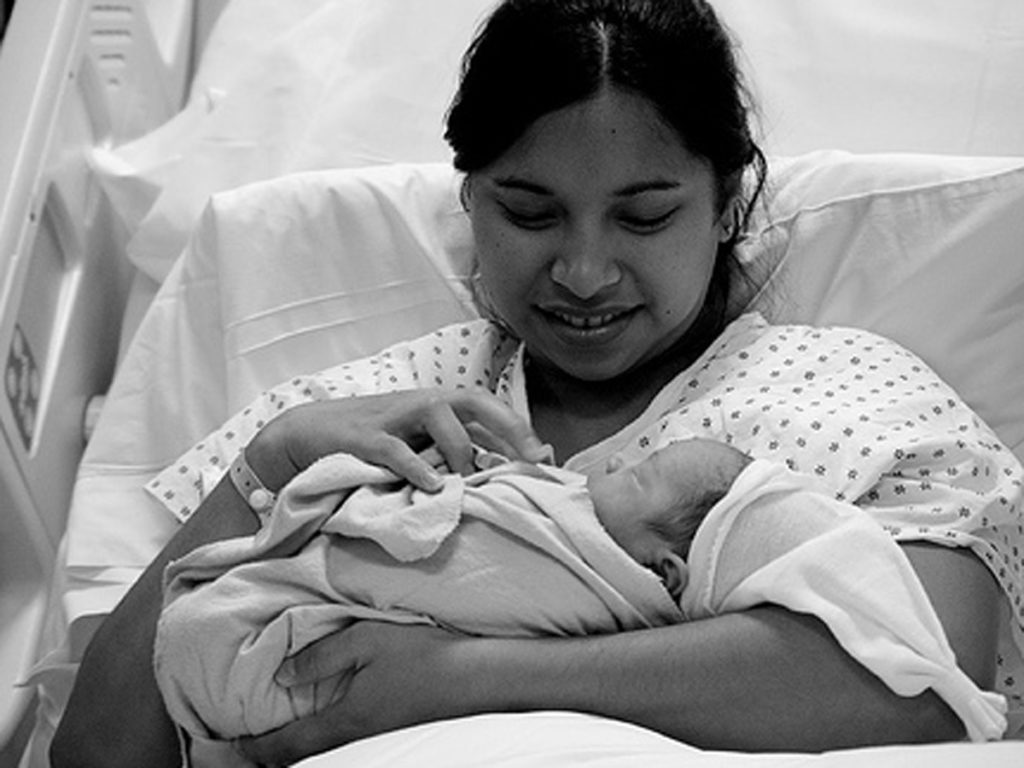Birth

Editor’s note: This entry was adapted and reprinted with permission from ”Cultural Traditions,” from the Hale’-ta Series, Department of CHamoru Affairs, Government of Guam.
Finañågu
The birth of a child is the most important family event in CHamoru society. It marks the beginning of family celebrations and obligations that define the child’s CHamoru identity throughout his or her life.
On the day of birth, family members wait. The female elders stayed with the pattera (nurse mid-wife) throughout labor until the child arrives. In the kusinan sanhalom pat kusinan sanhiyong, preparation of the kåddon månnok fresko(fresh chicken soup) begins. This is a special brew made just for the new mother and no one else is permitted to eat it. Children are cautioned not to eat na’mañågu or ansopblan mañågu because they may take on åguaguat (nonconformist behaviors), when they grow up. The kåddon månnok fresko is a clear chicken soup made from a freshly killed chicken that is boiled without coconut milk.
In early times, after the usual cleansing of the newborn, the child was placed on a specially made tinifok guafak, or mat, on which lay a delicately sewn pillow made of the softest åtgedon (cotton), by the matlina(godmother) and relatives of the child. Fragile baby clothes decorated by fine embroidery called tateng are presented to the family.
The new mother took her first labatoriu, or douche, on the first day after she gave birth. This is a concoction prepared by the suruhåna that consist of various herbs, the most popular of which are hagon nunu, maigo’ lålo’, and hågon åbas. This mixture helps the mother gain back her strength and tighten her vaginal muscles. The mother would spend many hours squatting over a orinola – a round sturdy porcelain pot – sometimes two or three times a day in order for the labatoriu to work.
Today, some women still use the åmot labatoriu for a quick and effective douche immediately after giving birth. Here’s the recipe:
Åmot Labatoriu
- 3 hågon åbas pat un råmas dikike’
- 3 hagon maigo’ lålo’
- 3 grånon golondrina
- 3 råmas yetbas babui
- 3 grånon låssas banålu
Na’lokklok este siha, despues kula påpa’ gi orinola. Fata’chongngi gi månu i sinigon–mu na maipe’.
While the new mother is recuperating, members of the familia from both sides of the baby’s family bring an abundance of food items for the whole family, such as titiyas (tortillas), atuli, alåguan (rice soup), dågu (taro), gaddo’, and meat from a freshly butchered cow to make kåddon kåtne (beef stew). For the new mother, the families would bring the specially prepared herbal drink, the åmot tininu.
These visits offer the first opportunity for the new mother and child to pay their respects to the elders by mangnginge’, and for members of the family and friends to give chenchule’ or tareha for the upcoming festivity, the baotismo, the rite of baptism.